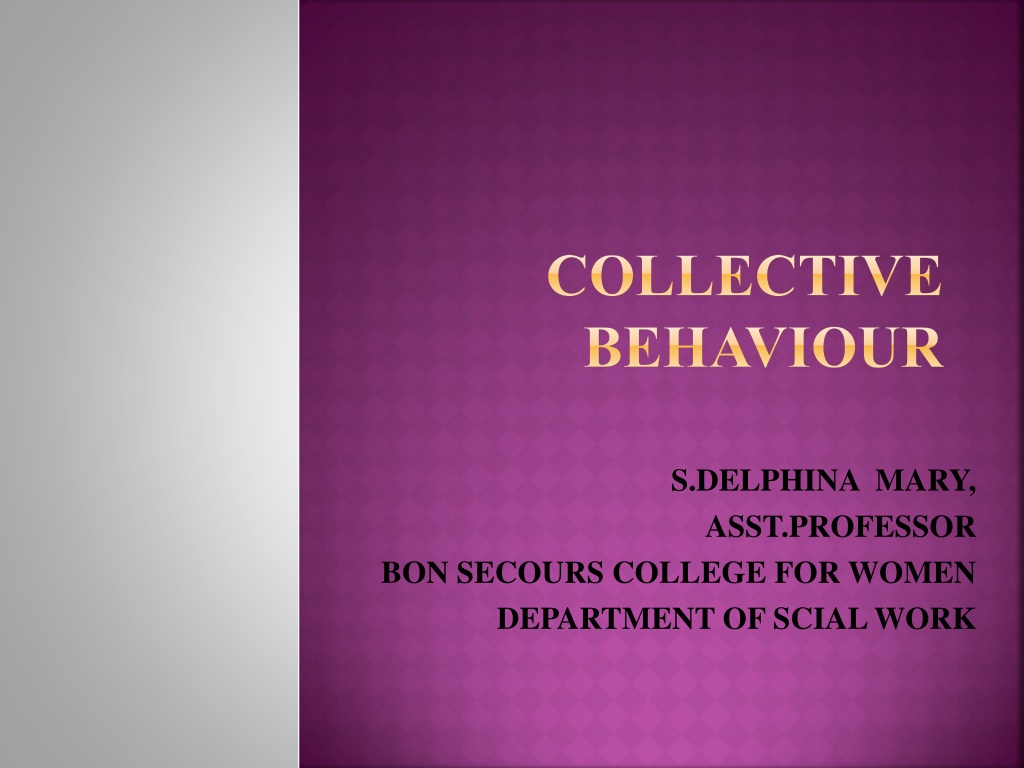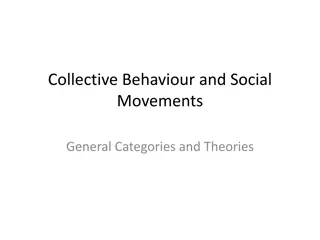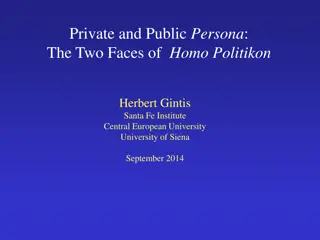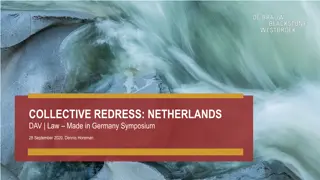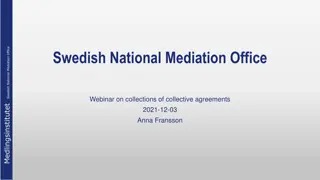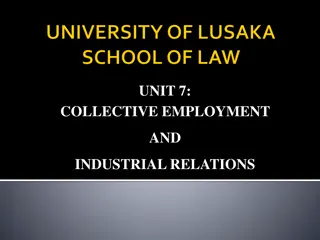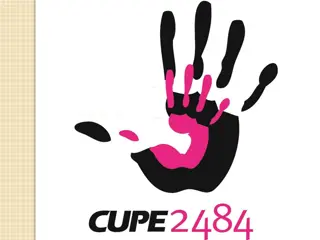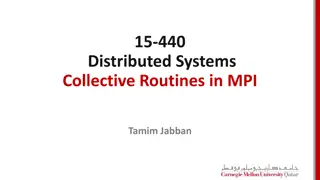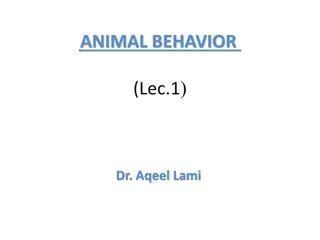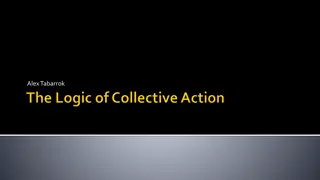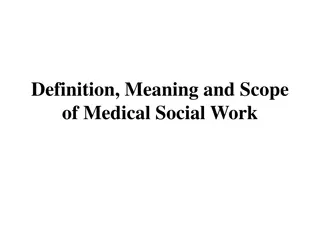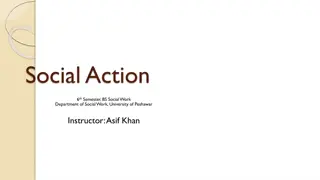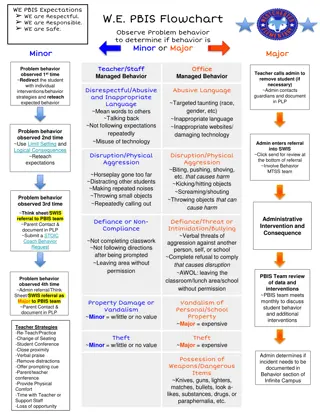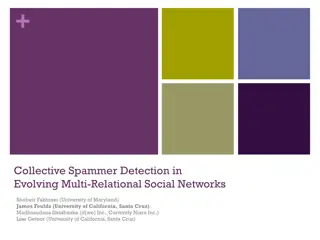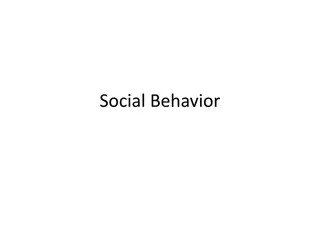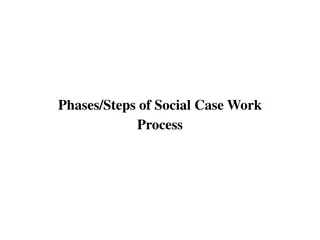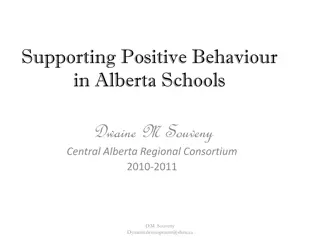Understanding Collective Behavior in Social Work
Collective behavior encompasses spontaneous and unstructured group reactions to common influences in ambiguous situations. It includes phenomena like mobs, crowds, panics, social movements, and revolutions. Such behavior is characterized by its episodic, emotional, and unpredictable nature, often lacking stable goals and rational decision-making processes.
Download Presentation

Please find below an Image/Link to download the presentation.
The content on the website is provided AS IS for your information and personal use only. It may not be sold, licensed, or shared on other websites without obtaining consent from the author. Download presentation by click this link. If you encounter any issues during the download, it is possible that the publisher has removed the file from their server.
E N D
Presentation Transcript
COLLECTIVE BEHAVIOUR S.DELPHINA MARY, ASST.PROFESSOR BON SECOURS COLLEGE FOR WOMEN DEPARTMENT OF SCIAL WORK
INTRODUCTION The term collective behaviour is commonly used in a generic or in wide sense to include all the facts and phenomena of associated life (or group life). In literal sense, it would incorporate all behaviours involving more than one person. From this viewpoint, practically, all group activity can be thought of as collective behaviour.
DEFINITION N.J. Smelser (1962), a sociologist who specializes in this field of study, has defined collective behaviour as the relatively spontaneous and unstructured behaviour of a group of people who are reacting to a common influence in an ambiguous situation . Mob, crowd, panics are prime examples of collective behaviour. Publics, lynchings, crazes, fashions, social unrest, social movements, and revolutions are other manifestations of collective behaviour.
NATURE OF COLLECTIVE BEHAVIOR Spontaneous and episodic: Collective behaviour is spontaneous and takes place occasionally rather than regularly and routinely. Unstable: It tends to be short-lived as long as the centre of attraction exists. It has no stable goals, values and expectations like institutionalized behaviour. Irrational: Usually such behaviour is guided by unreasoning, beliefs, hopes, fears and hatreds. In such situations, decisions are not generally made on the basis of logical or rational discussion.
NATURE OF COLLECTIVE BEHAVIOR Unstructured: It has not set rules or procedures to follow like a regular and routine behaviour. Generally, it is loosely structured. Unpredictable: The direction and outcome of such behaviour cannot be foretold. Emotional: Sometimes such behaviour is emotional and based on considerable personal interaction.
MANIFESTATION OF COLLECTIVE BEHAVIOR Some manifestation of collective behavior are Crowds Riot Panic and crazes Rumor Fads and Fashion
CROWDS The crowd is defined as a relatively large number of people in close proximity to each other (this is sometimes referred to as localized collectivises). The crowd reacts at once to a common focus or concern.
RIOT A riot is a form of mob which is violently aggressive and destructive. It may lead to violent acts against any object or person who happens to be in the wrong area at the wrong time. The incident that triggers a riot can be relatively trivial, as sometimes exchange of some hot words between the members of two castes, races or communities about something may lead to a riot
PANIC AND CRAZES Panics and crazes both represent responses to some generalized belief which may and may not be accurate. For example, when a fire breaks out in the theatre, every individual is so overcome by dread that each cares for his/her own safety and loses all consideration for others.
RUMOUR A rumour is a piece of information gathered informally which is used to interpret an ambiguous situation. It arises in such a situation where people want some verifiable information but do not get or cannot get it. Rumours are frequently, but not always, false. It can cause riot.
FADS AND FASHIONS: Fads and fashions are specific types of collective mass behaviour that people enthusiastically pursue. They refer to periodic changes in styles and patterns of our behaviour. Jewellery, clothing, music, recreation, hair style, etc., catch the fancy of people more than anything else.
CONCLUSION Collective behaviour is performed by a great number of individuals facing one unusual common issue. The members are connected directly or indirectly.
